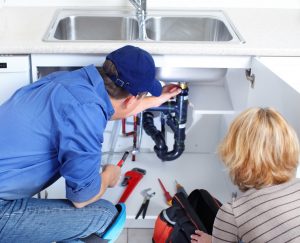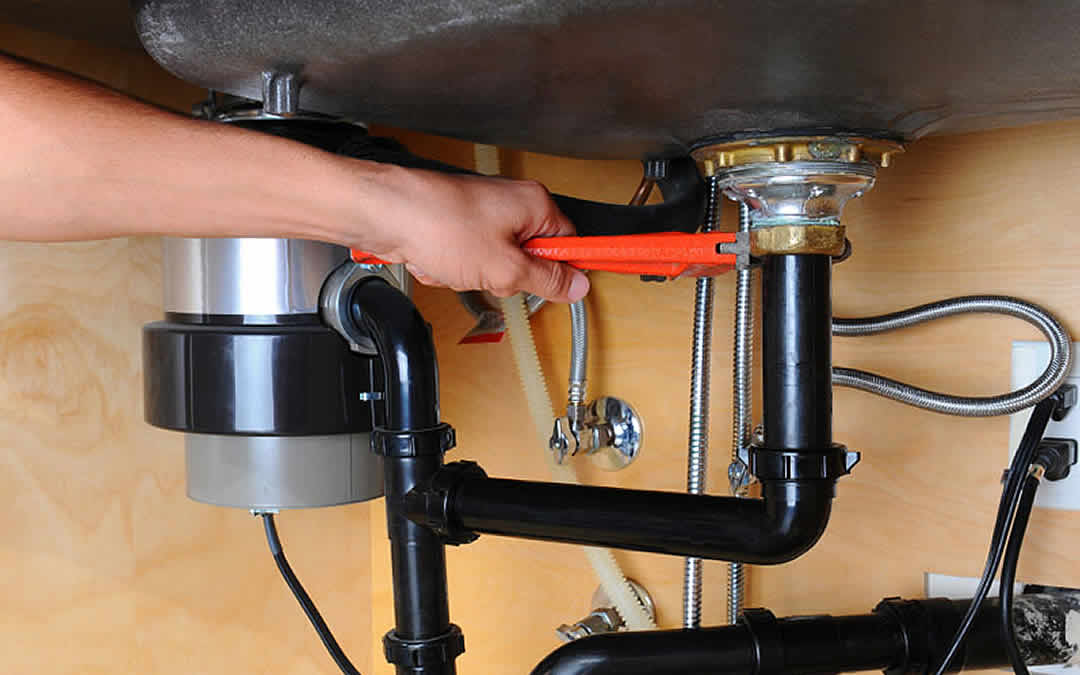We have discovered this great article about How to fix a pretty consistent leak from my garbage disposal down the page on the net and concluded it made perfect sense to discuss it with you on my blog.

Garbage disposals are essential cooking area home appliances that assist in getting rid of food waste effectively. Nonetheless, a dripping garbage disposal can be an aggravating and messy issue to deal with. The good news is, numerous leakages can be taken care of conveniently with a couple of easy steps. In this short article, we will go over just how to fix a leaking waste disposal unit successfully.
Introduction
Waste disposal unit are installed under kitchen area sinks and are developed to shred food waste right into smaller pieces, enabling it to travel through the pipes system quickly. While these tools are normally trusted, leakages can happen in time as a result of wear and tear, loose links, or damage to the device.
Common Reasons For Leakages in Trash Disposals
Worn Seals and Gaskets
Seals and gaskets play a vital duty in preventing water from leaking out of the garbage disposal. With time, these parts can weaken, leading to leakages around the disposal device.
Loose Links
The connections in between the waste disposal unit and the plumbing system can come to be loosened in time, causing water to leakage out throughout procedure.
Fractures or Openings in the Disposal System
Physical damage to the garbage disposal, such as fractures or holes in the real estate, can additionally lead to leaks.
Recognizing the Resource of the Leakage
Before trying to repair a dripping waste disposal unit, it is necessary to recognize the resource of the leakage. This can typically be done via aesthetic inspection or by performing basic tests.
Visual Examination
Examine the waste disposal unit system meticulously for any type of indicators of water leakage. Pay close attention to areas around seals, gaskets, and connection factors.
Checking for Leakages
One way to check for leakages is by running water with the disposal system and looking for any noticeable indications of leak.
Devices and Products Needed for Dealing With a Leaking Waste Disposal Unit
Before beginning the fixing procedure, collect the required tools and materials, including a screwdriver, adjustable wrench, plumbing's putty, replacement seals or gaskets, and epoxy or patching material for repairing splits or holes.
Step-by-Step Guide to Fixing a Leaking Garbage Disposal
Switch off the Power
Prior to attempting any type of repairs, ensure that the power to the garbage disposal device is switched off to stop the threat of electrical shock.
Locate the Leakage
Identify the precise location of the leakage and determine the reason.
Tighten up Links
Use a wrench to tighten up any type of loose links between the disposal device and the plumbing system.
Change Seals or Gaskets
If the leakage is due to worn seals or gaskets, eliminate the old parts and replace them with new ones.
Patching Splits or Openings
For cracks or openings in the disposal unit, usage epoxy or an ideal patching material to secure the broken location.
Evaluating the Garbage Disposal After Repair
Once the repair is full, test the garbage disposal by running water via it to ensure that the leakage has actually been solved.
Preventive Maintenance Tips to Avoid Future Leaks
To avoid future leaks, it is necessary to execute regular maintenance on your waste disposal unit. This includes keeping it clean, avoiding putting non-food things or difficult things down the disposal, and regularly looking for leakages or various other issues.
Conclusion
To conclude, fixing a leaking garbage disposal is a relatively uncomplicated procedure that can be completed with standard tools and products. By following the steps laid out in this post and exercising precautionary upkeep, you can keep your waste disposal unit in good working condition and avoid costly repairs in the future.
What to Do About a Leaking Garbage Disposal
A leaking garbage disposal often goes unnoticed until you confront a sopping cabinet, a foul-smelling puddle, or an audible drip-drip-drip from the unit. The fix can be frustrating, too, because the leak can stem from a number of components in the system. Fortunately, with a little sleuthing, you can zero in on the leak and—depending on the exact location—stop the icky oozing and repair the component that caused it. Worst case scenario, if it turns out that the garbage disposal must be replaced, installing a new one is a reasonable do-it-yourself task for those with basic plumbing skills. Read on to keep the cash you’d otherwise hand over to a pro.
Prepare to find the leak
Prior to testing the garbage disposal for leaks, unplug it at the wall outlet and turn off the power from the breaker box to prevent electrical shock. Then insert a watertight sink stopper into your sink drain and wipe the unit dry with a clean cloth. In any handy container, mix a few drops of food coloring into a few cups of water, and pour the dyed water onto the sink stopper to help you locate the leak.
Investigate the source
the top, where the disposal meets the sink drain the side, where the dishwasher hose or main drain pipe connects to the disposal or the bottom of the unit Inspect each of these locations while gliding a light-colored rag over the unit; the dyed water will readily show on the rag and reveal the location of the leak. If a leak isn’t immediately apparent, remove the sink stopper and pour a few more cups of dyed water down the sink drain, then check for leaks again. Leaks near the top of the unit are more likely to show themselves while the sink is plugged, while side and bottom leaks are more noticeable while the sink is unplugged.
The metal sink flange that sits directly inside the sink drain is typically sealed around the top with plumber’s putty (a clay-like sealant) and then secured from under the sink with bolts. If the plumber’s putty deteriorates, or the bolts loosen, the flange can no longer form a watertight seal between the sink drain and the disposal—which could cause a leak at the top of the unit.
To reseal the leaky flange, you must first detach the garbage disposal. Start by loosening the screws securing the main drain pipe to the disposal, then loosen the screws in the metal clamp securing the dishwasher hose to the disposal and detach the drain pipe and dishwasher hose from the disposal. Loosen the screws in the mounting ring that connects the disposal to the metal mounting assembly beneath the sink, then pull down the disposal and carefully set it on a clean, dry surface. Loosen the bolts in the mounting assembly with a wrench, then pull down the mounting assembly and set it near the disposal.

As a passionate reader on Why Is My Garbage Disposal Leaking From the Bottom?, I thought sharing that article was essential. Kindly take the opportunity to distribute this write-up if you appreciated it. Kudos for your time. Visit again soon.
Call Today